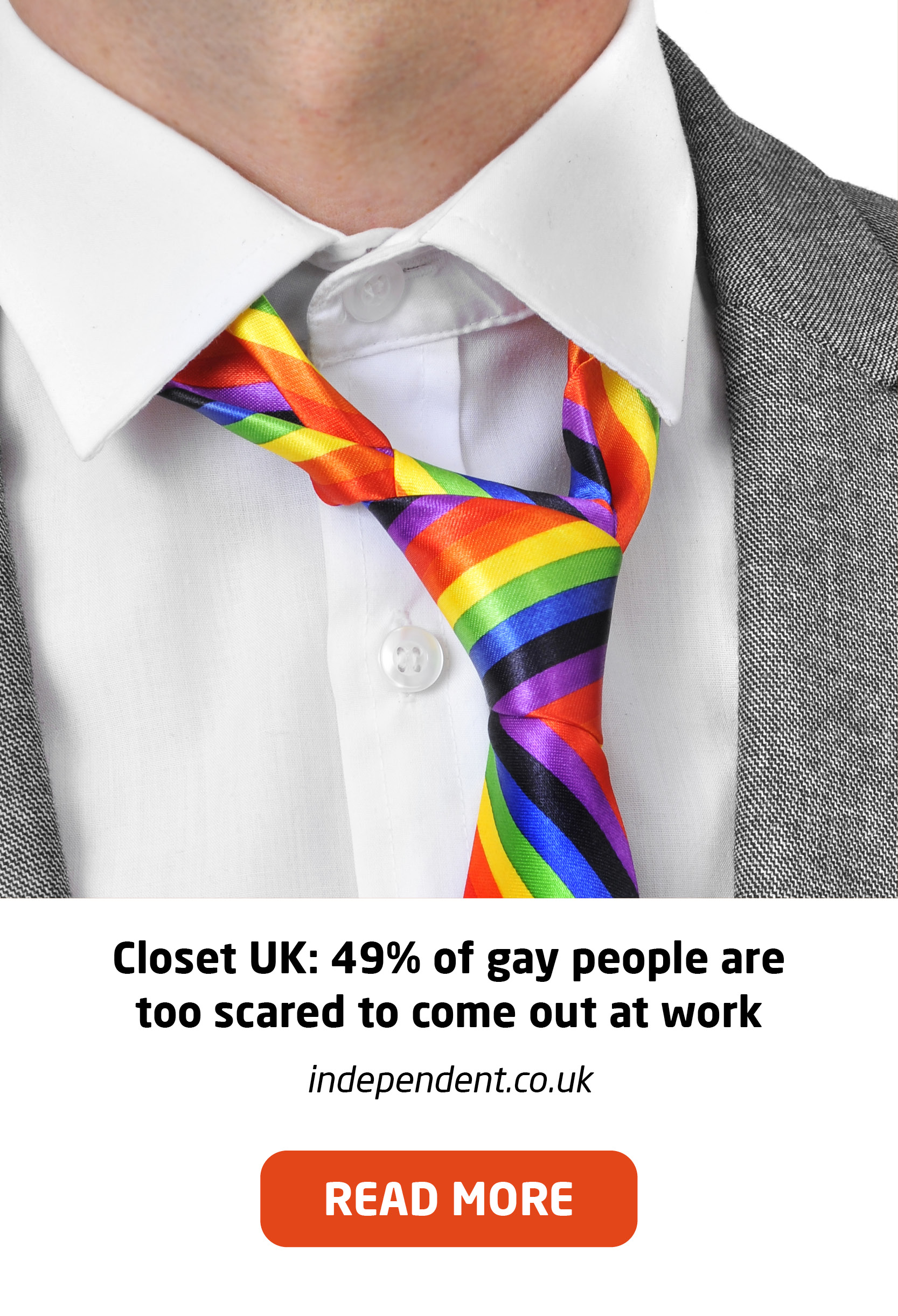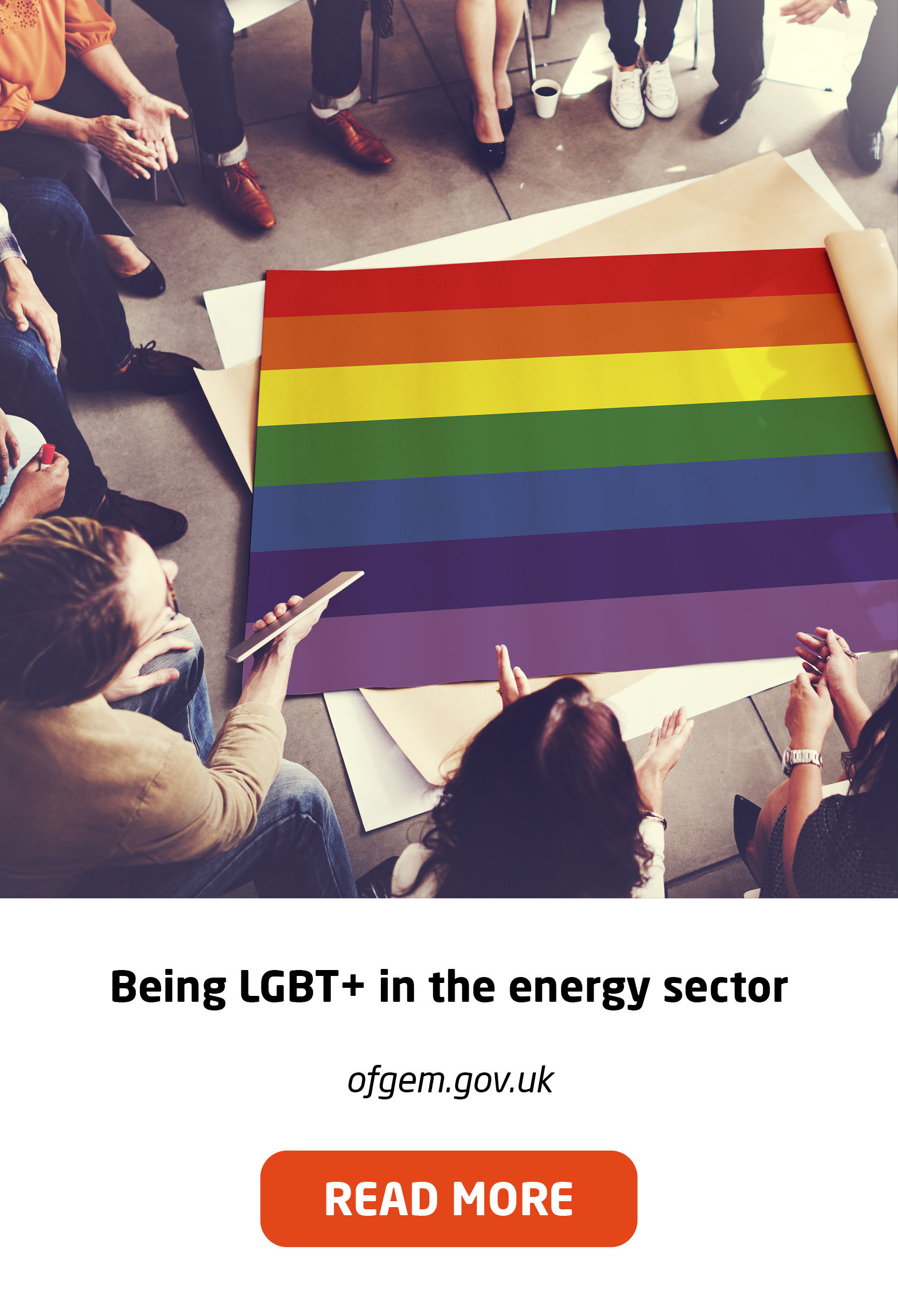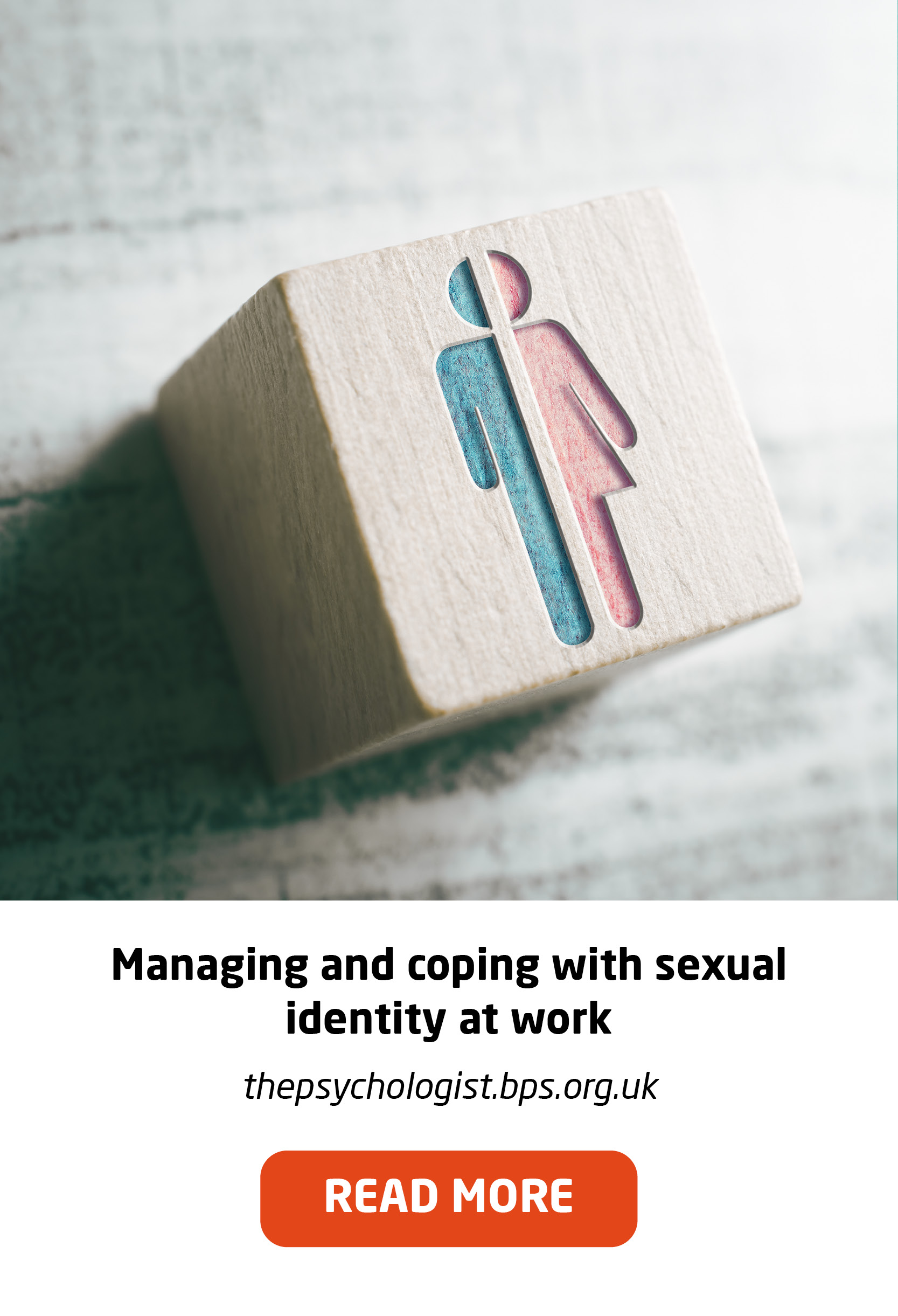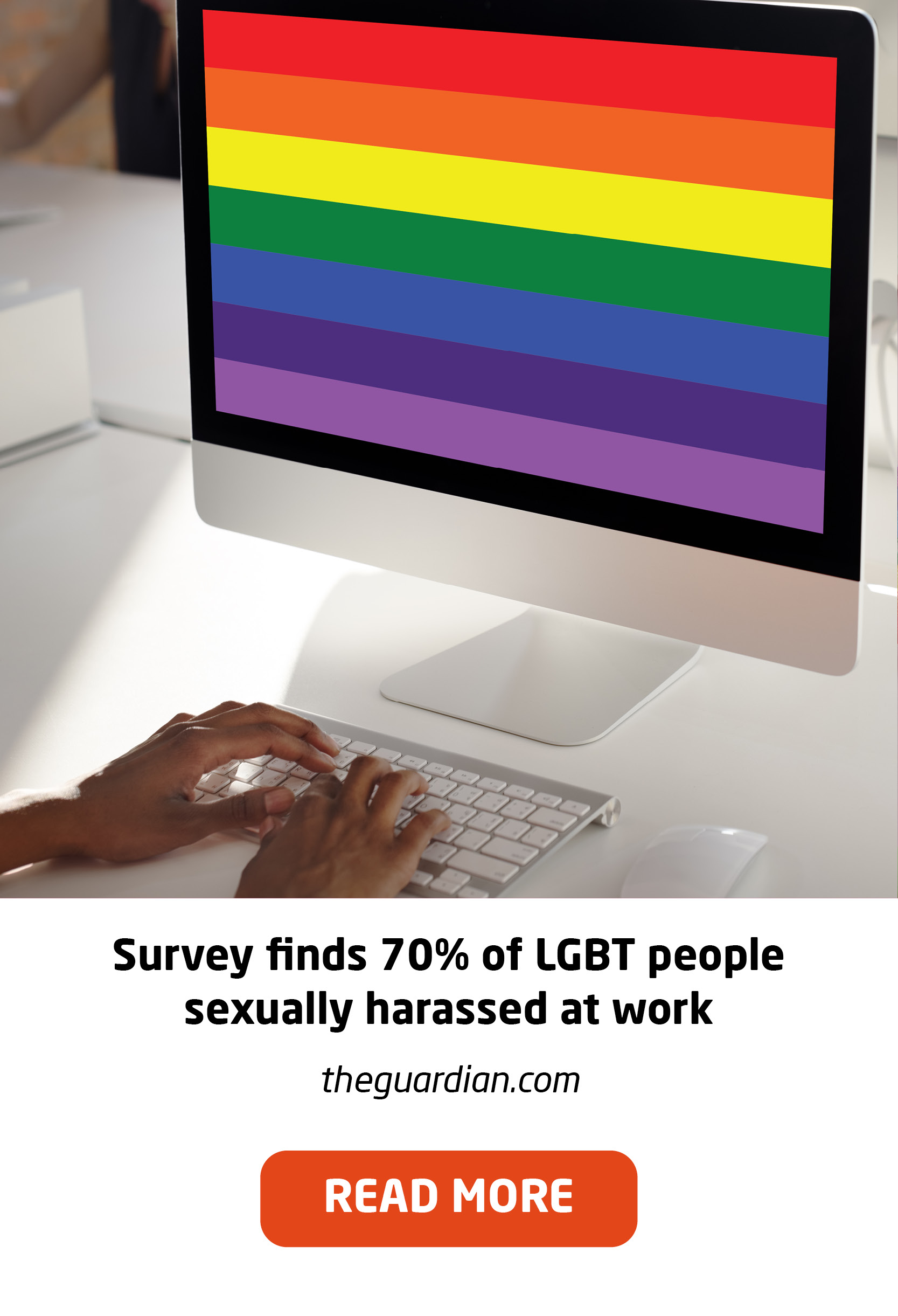
The charity is adapting its support service to help industry members through this pandemic. We are providing regular updates for the industry and offering lots of useful information, advice and support links on issues that may be affecting you or your family members during COVID-19 such as:
Practical Support - Reducing personal debt, helpful advice for those who are worried about their and the person that they care for safety - Salary and more.
Employed and Self-employed support - Help and Guidance for employers who are looking to furlough employees or struggling with Covid-19 generally and more.
Mental Health support - Feeling the pressure to be productive? A useful toolkit to support your mental health during the pandemic, how to protect your mental health during the pandemic and more.
Housing support - The welfare team are supporting renters who need to write to their landlords in support for rent holidays and more.
Welfare benefit Support - If you are self-employed or lost your job because of COVID-19 consider applying for universal credit? And more.
Legal support – Advice for employees requiring legal support during the pandemic and more.
Self-Isolation - Guide for social distancing and more.
For all this information and more please visit our COVID-19 regular updates website page at the link below:


Today we live in a world where is it more accepting and ok to be you. For the LGBTQ community the freedom and opportunity to live life as who you truly want to be has become more forthcoming, however there are still many hurdles, impacts and stigmas that are to be faced. We look at the challenges, emotions and support in the LGBTQ community here.
Help and advice about coming out as lesbian, gay, bi and/or trans for adults
What is 'coming out'?
Telling people about your sexual orientation or gender identity is called coming out. Coming out is not necessarily a one-off event - lesbian, gay, bi and trans (LGBT) people may have to come out many times during their lives. It is also very individual, and people may face different challenges when coming out.
There is no one prescribed way to come out. You may feel comfortable being open about your sexual orientation and gender identity with some people, but not with others. Coming out may be difficult and takes courage. Reactions to someone coming out can range from very positive to less welcoming. Once you have made the decision to tell people, you may want to think about how you tell them. We have set out a few thoughts on coming out, and links to where you can find further advice and support.
Why come out?
Whether you have come to terms with your sexual orientation or gender identity, or you are still thinking about it, it can be difficult dealing with that on your own. You may get to a point where you need to talk about it with someone, to get support or simply get it off your chest. To hide who you are from other people often means lying and pretending. You will need to think about whether hiding is more or less stressful than being open about it. Do not feel under pressure to come out - take your time. Only you will know when you feel comfortable and ready to do it. If you decide to come out, but are unsure how others might react, you could consider contacting a support group first. There are helplines, community groups and agencies across the country who are there to support and advise you.

What will my friends say?
Most people worry about how their friends will react when they come out. Your friends might be surprised, have lots of questions, not know what to say or may have even guessed already. At first, choose a friend you trust and who you think will be supportive. Think about how you will answer some of the things they might ask like, ‘how do you know?’. If a friend reacts badly, remember they might just need some time to absorb what you have told them. Although you cannot predict what people will say or do, when you tell a close friend that you trust, the chances are they will be pleased you have shared something so personal with them.
How do I tell my family?
There is no right or wrong way or time to come out to your family. However, it is a good idea to take time to think about what you want to say. Coming out when you are arguing or angry is not a good idea. Some people tell their family face to face while others prefer to write a letter or send an email. Your family might be shocked, worried or find it difficult to accept at first. Remember, their first reaction is not necessarily how they will feel forever, they might just need a bit of time to process what you have told them.
Coming out at work
Stonewall knows that people perform better when they can be themselves. This means it is is in your employer's best interest to support you to be open and honest about who you are when at work. Some employers have LGBT staff networks which you can join for support and to meet other people.
The Equality Act 2010 bans discrimination and harassment on the grounds of sexual orientation and gender reassignment (gender identity) in employment and vocational training. This includes direct and indirect discrimination, harassment and victimisation, and you are protected throughout the entire employment relationship, from recruitment to dismissal. Discrimination applies to terms and conditions, pay, promotions, transfers, training and dismissal. You can read more about these protections on our information pages under Discrimination At Work.
Stonewall works with employers across England, Scotland and Wales through its Diversity Champions programme. This is Britain’s leading best-practice employers' forum for sexual orientation and gender identity equality, diversity and inclusion. You can see who is a member of this programme, and explore our Top 100 Employers for LGBT people 2018.


Make sure you come out only when you really want to. Take control of the situation and remember that it may be more of a process than an event
- You don’t have to come out. While many people find it’s a great weight off their shoulders, others don’t want to come out, seeing their sexuality as a completely private matter – so it it’s really up to you. Only come out when you feel comfortable and confident in doing so.
- Coming out can be a really positive experience and it can feel liberating to be authentic with family, friends and colleagues. You can also be a positive role model to others around you who may be considering coming out.
- Many people worry about other people’s reactions. Key concerns are that they won’t be accepted or will be seen differently. So if someone comes out to you, one of the best ways to respond is to say, “I still feel exactly the same about you.”
- Worries and concerns may vary according to how old you are. Younger people can be more concerned about reactions and acceptance among their peer group and worry about whether or not they might be bullied. Older people – especially those in a heterosexual relationship and maybe with children – may have different dilemmas. If you are coming out to your children, remember to remind them that you are still the same person, that you still love them and that you still feel the same way about them. If at all possible, get the support of your ex-partner and tell the children together.

- Allow people to be shocked and to need time to take the news in – be sensitive to their feelings, too. Pick a quiet, calm time when you tell people, which will give you all time to talk about it. Remember that coming out may be more of a process than an event.
- If family or friends react in a negative way, it will not necessarily be how they always feel. Give them time to get used to the news. First reactions are not always lasting reactions.
- If you are really nervous about coming out to family or friends, consider writing them a letter telling them, then follow up with a phone call or visit. This allows the recipient time to get used to the news, but you still retain control of the situation.
- Staying in control of the news should always remain with the person who is coming out. So, it’s important so think about this when choosing how to do it. While you should use whichever medium, you feel most comfortable with – face-to-face, phone call, text, email, social media – it’s worth bearing in mind that some offer more privacy than others.
- If you are not sure of how certain significant people in your life may react, it’s a good idea to build a support network around you first. This could mean coming out to one person whom you trust and are reasonably confident will be supportive. If necessary, have that person with you when you come out to others.
- If you suspect someone you know is LGBT, remember that you cannot – and should not – force them to come out, but you can foster an environment where the person feels supported and safe to do so.

We all understand that it is important to be able to be who you feel you are no matter who that person is. As our society evolves and perceptions change, the idea of being able to be who you want with no fear is now a reality for a lot of people. Although being part of the LGBTQ+ community is more commonplace than ever many individuals still struggle trying to find their own identity and establish who they are.
The Electrical Industries Charity are beginning to receive more and more calls from those who may be struggling with their self-identity or from family members who are adjusting to a child, brother, sister or partner who is trying to establish who they are. Reaching out to the Electrical Industries Charity is the best first step you can make to change your life and your relationships. Caroline, a power station employee, contacted the Electrical Industries Charity after attending a Mental Health Awareness Training session hosted by the charity at her workplace.

Upon speaking to our welfare team Caroline raised concerns about her daughter, Rachel, who had begun to dress in a more masculine manner and had cut her hair short. Caroline had contacted Rachel’s school to understand if her daughter had been behaving differently within schooltime. The school informed Caroline that Rachel had asked to be referred to as ‘Ben’ during school and had asked her peers and teachers to use masculine pronouns.
Rachel had begun to live as Ben throughout schooling hours and had now started to become Ben at home too. As Rachel became more comfortable with her identity and chose to be Ben, Caroline was very accepting and approached the charity for support and a listening ear. As well as providing a shoulder to lean on the welfare team also signposted Caroline to the NHS Gender Identity Development Service (GIDS) website. The GIDS site is aimed at parents and carers of individuals who do not feel comfortable with their gender.
The Electrical Industries Charity work alongside partnership organisations and other charities. Often, the charity can point you to a team or a resource which can help you more effectively if they cannot assist directly. The most important step is to reach out and establish that first line of contact with the charity so they can be that crutch of support and point you into the right direction when you need it most.
Not only did the charity support Caroline with external information they also sourced and funded a Gender Identity Specialist Therapist to help Ben feel more comfortable and understand his own feelings more. Alongside Ben’s therapy the Electrical Industries Charity supported Caroline and spoke with her frequently. Caroline was very accepting of the fact that Ben’s experimentation with his gender may or may not be permanent and knew the charity would support her with either outcome. It was clear, much like many parents, Caroline just wanted Ben to be happy regardless of his gender. Ben attended a block of therapy sessions on his own and Caroline joined him for an additional block of sessions, with an aim for the pair to build an open relationship in which Ben could feel comfortable knowing that Caroline would be supportive of him no matter what. Without the support of the Electrical Industries Charity Caroline and Ben would have not built the much-needed bridges in their relationship.
Ben and Caroline continued their therapy sessions and Caroline explained since the specialised therapy Ben had been feeling much happier and much more confident with himself and with Caroline. Since the charity funded therapy Ben has become more comfortable with who he is and in turn feels as if he can make discoveries about himself without pressure or fear. Ben has since begun to be more feminine in his choice of clothing and has been wearing a small amount of makeup as well as letting his hair grow longer. Caroline remains very accepting of Ben and who he is regardless of how he chooses to live and express himself.
The Electrical Industries Charity have been pivotal in Caroline and Ben’s relationship flourishing through adversity and the changes in their personal and home life. Charity sourced and funded therapy is just one of the many support avenues the Electrical industries Charity has available to those within the energy and electrical sector. Their dedicated and confidential welfare help line is open 365 days a year and is free for anyone within the industry no matter their struggle or circumstance. Being able to be who you are should not be a choice, but a given.
If you or someone you know needs support to help them understand who they are then please get in touch with our welfare team on 0800 652 1618 or This email address is being protected from spambots. You need JavaScript enabled to view it.

We often hear of those who transition gender in their early adulthood or teenage years, but rarely do we understand what it is like for someone in their fifties to transition genders. Meet Selina. Selina has worked for over twenty years with a major energy provider and was formally known as Tony.
When you truly accept who you want to be the change in your life can be huge. It is once you understand who you want to be and begin to be that person the rest of your life may fall into place. It is not easy to make a huge change, such as a gender transition, but becoming who you are is the most sure-fire way to feel yourself. So much of our own identity is rooted in how we look, how we act and if how we look and act truly reflect how we feel. Sometimes all it takes is to reach out and let the Electrical Industries Charity help you to discover and embrace who you really are.
Tony was initially referred to the Electrical Industries Charity in June 2017 by the occupational health department within his work. He had been absent from work for a prolonged period due to severe depression and anxiety.
While being supported by the Charity Tony’s mental health rapidly deteriorated and in June 2019 Tony began to feel suicidal. Although Tony had been referred to the charity before he reached crisis point his ongoing internal battles and escalating depression and anxiety meant daily living was becoming unimaginable for Tony.
Luckily, Tony was well supported by his GP and the Electrical Industries Charity provided a constant stream of support through a dedicated welfare case worker and ongoing counselling support.

While Tony’s therapy continued and his relationship with his Electrical Industries Charity caseworker strengthened, he began to talk more openly and in May of 2019 explained to his charity caseworker that he wanted to become a woman. This was the first pivotal step in Tony’s road to acceptance and potential recovery.
This was not a new feeling for Tony. For much of his life he had felt strongly he was born into the wrong body and had even dressed as a woman in private both during his marriage and during other relationships. It became clear that Tony’s inability to be who he truly wanted to be was probably the root cause of his depression and anxiety. Tony’s valuable work with The Electrical Industries Charity sourced counsellor meant he was now ready to become who he wanted to be.
Although Tony knew he wanted to be a woman and identified as a female he believed he was too old to transition and live as he wanted to. The Electrical Industries Charity spoke to Tony about latter life transition and explained many individuals make this transition no matter their age. He was strongly advised by his case worker to speak to his GP and investigate the transition process. Within a month of speaking to his GP, he had been referred to the local Transgender Clinic for their agreement to take him onto their waiting list – the first step in a long road to self-acceptance and happiness.
Within two months Tony was Selina in name. Selina changed her name via Deed Poll and had informed her employer of her new name and asked to be referred to using female pronouns. She now lives as a woman completely after work and on weekends. Selina also told her family of her identity and even attended the office as herself. A huge leap towards Selina living as her true self entirely.
None of this has been easy, nor has it instantly solved her depression and chronic insomnia. Selina’s transition has not only been tough on her but also her family and her work colleagues. The transition at work has been understandably difficult and Selina has found herself feeling uncomfortable in the office environment. Although the LGBTQ+ community has become more commonplace there remains some discomfort in working communities but with the changing face of society and definition of ‘normal’ Selina hopes she will be able to work while being exclusively herself.
Selina’s main support remains to be the Electrical Industries Charity and her counsellor who is continuing to provide ongoing support to her. Selina has now made great steps in becoming who she wants to be with the help of the Electrical Industries Charity.
Selina’s story is one to provide insight and understanding into the plight and complexity of an individual trying to be their true self and the stigma and discrimination they experience from society. The Electrical Industries Charity continue to support Selina as she continues to live as who she wants to be. It is fundamental for your own wellbeing to feel accepted and loved for who you are, and the Electrical Industries Charity want to champion it’s June health topic ‘It’s okay to be you’.
If you or someone you know need support in their transition or with their identity please contact the Electrical Industries Charity support line on 0800 652 813 or This email address is being protected from spambots. You need JavaScript enabled to view it.

CN’s annual LGBT survey shows a sector that needs to do much more to attract a diverse workforce and improve public perceptions. Being told that all gay men should be euthanised. Your boss telling you that bisexual people don’t exist. Considering leaving the industry due to the degree of homophobia at work.
These incidents sound as if they are from decades ago, but these are just a few examples of experiences that LGBT employees in the construction industry have had in the workplace this year. Last year, Construction News revealed that only 7 per cent of LGBT workers would recommend the industry to prospective colleagues.
It led to demands from industry leaders that the construction sector undergo a cultural shift in attitudes. This year, we opened the survey again to see whether progress has been made. However, the results make for worrying reading.
A step backwards
Feeling unable to be open about sexuality on construction sites is a widespread issue that LGBT employees in the industry face – and one that is not improving. Seventy-one per cent felt they could not be open about their sexuality on a site, compared with around 69 per cent last year. Perhaps most worryingly, many LGBT workers felt their sexuality at work also hindered their career development. Around 51 per cent said their sexuality prevented them from progressing their careers in the industry – a 9 percentage point rise since last year. LGBT membership organisation OUTstanding’s CEO and founder Suki Sandhu says it is crucial for diversity to be seen as an asset rather than a barrier to advancing within the industry.
“A typical construction site today includes workers from all walks of life,” he says. “Our differences allow us unique perspectives that encourage creativity and innovation. Instead of being seen as hindrances that hold us back, they should be widely celebrated.” “There is a significant skills gap and the industry is realising it is missing out on a whole pool of talent in the LGBT community” Harvey Francis, Skanska
It is clear the industry needs to take bigger steps forward in encouraging diversity – something that also makes good business sense. Recent research from global consultancy firm McKinsey revealed that diverse businesses outperform their competitors by up to 35 per cent. The industry is facing major challenges around capacity, so re-evaluating its approach to LGBT workers could be an innovative solution to tackling this problem – something contractors such as Skanska are starting to tap into.
 “There is a significant skills gap within the industry in all vocations and the industry is realising it is missing out on a whole pool of talent in the LGBT community, as well as from other groups,” says Skanska executive vice-president Harvey Francis.
“There is a significant skills gap within the industry in all vocations and the industry is realising it is missing out on a whole pool of talent in the LGBT community, as well as from other groups,” says Skanska executive vice-president Harvey Francis.
“We need to work together to change the culture and perception of the industry. Through the LGBT in construction working group – comprising Skanska and 11 other construction industry companies – we have started to tackle the issue together.”
Skanska, along with firms including Balfour Beatty, Carillion, Lendlease and Laing O’Rourke, have joined an LGBT construction working group with the aim of improving support for their LGBT colleagues. “Clearly there is a lot more that companies need to do to create the right environment for LGBT staff but also to educate senior and middle managers on how to create and maintain inclusive cultures in their teams,” she says. “It’s a big problem in the industry that we cannot hide from and it’s time more firms took action to address this, whether in the office or on site.”
Around 63 per cent said they did not feel comfortable being open about their sexuality or gender at client meetings and industry events and 45 per cent would feel uncomfortable bringing a same-sex partner to a professional or social industry event. Although these figures have improved since last year, they still make for a worrying insight into the exclusivity of the industry.

The evidence is clear: companies that embrace LGBT policies outperform their competitors. Diversity helps draw top talent and foster innovation, and people perform significantly better when they can be themselves at work.
However, many LGBT people in the UK still choose not to disclose their sexuality at work. And many more Lesbian, Gay, Bisexual, Trans and Queer (LGBTQ) senior executives have not come out at the office.
Fear of homophobia, exclusion, being passed over for promotions and job interviews are still very real for many LGBT people. In fact, gay and lesbian job seekers are 5% less likely to be offered a job interview than heterosexual applicants with comparable skills and experience.
So, what can businesses do to demolish career barriers, reduce workplace discrimination, and better support employees who identify as LGBT in the workplace?
1. Develop a Clear Mission for Supporting LGBT in the Workplace
2. Take LGBT Discrimination Seriously
3. Develop Support Programmes for LGBT Employees
4. Promote Allies of LGBT People
5. Get Support from Senior Staff
6. Support the Local LGBT Community
7. Offer LGBT-Friendly Benefits
8. Foster a Gender-Neutral Environment
9. Keep Track of Success
10. Support Transgender Employees
For more information on supporting LGBT employees in your organisation, visit Stonewall, Workplace Pride and OUTstanding.

Does your sexual orientation affect your progression in the workplace? Are your colleagues accepting of your sexuality? Is it irrelevant to your role or should you be out and proud in the office? We asked E&T’s LGBT engineering community to share their experiences of working within the industry.
“A lot of employers take the stance: ‘why should we care what you get up to in the bedroom?’. But really the question is; if you’re not comfortable at work can you perform at your best?” Chris Edwards is client group manager at LGB rights charity Stonewall, which helps companies achieve best practice in terms of sexual equality. In an attempt to address the perception that engineering is more LGBT-discriminatory than other industries, E&T recently conducted a survey into the experiences of lesbian, gay, bisexual and transgender engineers in the workplace.
While many will question the relevance an engineer’s sexuality bears on their employment, it may help to look at the issue in regard to profit. Studies have shown that workplaces that are truly inclusive are proven to attract and retain staff that are more creative, productive and able to reach their full potential. This is particularly pertinent in industries such as engineering, which is not only experiencing a skills shortage but is also struggling to recruit younger engineers into an ageing workforce. EY (formerly Ernst & Young) has conducted global research showing that employees in fully inclusive environments bring in over £70,000 per year more to an organisation than those working in areas where they feel they can’t be themselves.
Honesty is the best policy
The E&T survey respondents are almost evenly split in their openness at work about their sexuality. Just over 45 per cent say they are open at work about their sexuality, while 41.8 per cent say they are not.
The glass ceiling
Around 17 per cent feel that their sexuality has created a barrier to their career progression. Some noted a clear decrease in casual conversations when their managers discovered their orientation, which led to less professional interaction. “I was overlooked for promotions, hence my departure to another company.”
Gender diversity
Tim Macavoy, events director at professional technology and engineering diversity network InterTech and UX editor at Skype, says that for lesbian and transgender engineers, being discriminated against because of their sexuality is only the tip of the iceberg. “Certain areas of the engineering industry lends itself to homogeneous cultures, and that can be difficult to work in. Engineering in general struggles with attracting gender diversity, as well as LGBT, and I think this is something the industry as a whole is very aware of.”
Direct discrimination
Only 7.7 per cent of respondents felt they had been discriminated against work, and were subjected to “slurs”, “mocking” and “homophobia”, with some questioning whether they’d picked the right career. One, who works in defence, says: “I had bad experiences when in the army, there’s not a chance in hell I’d ever tell anyone again.”
Macavoy says this response is encouraging. “I think we’re becoming more aware that creativity comes from diversity and wild ideas and different backgrounds and experiences,” he says. “Some companies who are headed up only by straight, white men take a look around and say, ‘this probably isn’t good enough’. They want to change the way their organisations are run; they want to change their conversation with people.”
Talkpoint: While progress has been made, many lesbian, gay, bisexual and transgender people still worry that revealing their sexuality at work will have negative consequences. What can businesses do to support LGBT employees?
Lesbian, gay, bisexual and transgender people who are 'out' at work waste little energy hiding aspects of their personalities, meaning they feel more confident and progress within the business. However, many remain in the closet. Most of Europe and the US is relatively accepting of the LGBT community; the issues that gay and trans people face here are minor in comparison to countries where displays of homosexuality can lead to prison, torture and death. Still, 34% of lesbian, gay, bisexual and transgender people in the UK choose not to disclose their sexuality at work. They hide their private lives from colleagues and clients for fear of homophobia, exclusion or in case they are overlooked for valuable promotions. Be it on the factory floor or in a board meeting; evading questions about family life can be like dodging bullets if you think that revealing your sexuality will make work relations difficult. LGBT people like myself are very aware of the fact that we live in a heteronormative society.

Transgender people, whose sexuality often has nothing to do with the discrimination they encounter, face further stigma still due to a widespread lack of understanding of the issue. Many choose to leave their workplace in order to undergo their transition.
What can businesses do to create a culture of inclusion?
It is no wonder, perhaps, that companies have been skirting around the LGBT question, treating it as the elephant in the room. There are few 'out' role models to demonstrate that members of the LGBT community even exist in business. Lord John Browne (whose recently published book The Glass Closet is essential reading for anyone taking diversity in the workplace seriously) is one of few openly gay business figures and we need more people to be as courageous as him. As well as a wider representation of gay and trans people in business, we also need straight allies to be vocal about their backing and we need businesses to make a stand. A company that can pledge its support to employees irrespective of their skin colour, gender or sexuality stands to benefit hugely; firstly by creating a sense of empowerment among employees and secondly by setting an industry standard that can pave the way for change across society.
LGBT inclusion in the workplace is fast becoming a priority for organisations of all sizes across the UK. This includes SMEs as well as big businesses, as LGBT inclusivity offers a distinct competitive advantage for all organisations. The benefits to an LGBT inclusive workplace extend beyond that of making sure employees of all sexualities and gender expressions feel safe and valid, though of course this is the primary reason. LGBT inclusive workplaces benefit businesses too.
Having robust inclusion strategies in place for LGBT staff make sense from a business perspective as well as a moral standpoint. This is because all employees will feel less stressed and more productive as respected members of a cohesive team.
Strategies for LGBT inclusion in the workplace
Here are some key LGBT inclusion strategies that SMEs can consider adopting for a more LGBT-friendly workforce:
1. Review your policies for LGBT inclusion
Having LGBT policies in the workplace is crucial for setting the guidelines on how to be more inclusive and avoid discrimination.
2. Provide LGBT training
Offering LGBT training in the workplace as part of equality and diversity training can be a powerful way to educate everyone about LGBT issues.
3. Set up an LGBT network
For growing SMEs, creating an LGBT network can be a great way to support LGBT staff.
4. Appoint LGBT allies
Are there non-LGBT people in your workplace who are passionate about or interested in LGBT rights? Get them onboard as an LGBT ally.
5. Incorporate gender-neutral language
Gender-neutral language avoids bias towards a particular gender.
6. Create unisex toilets
Whenever possible, there should be a gender-neutral bathroom option, particularly if you provide singular toilets.
7. Celebrate LGBT history and events
Celebrating LGBT History Month, Pride, or Trans Day of Visibility just as you would other important days in the calendar.

Health
- Half of LGBT people (52 per cent) said they’ve experienced depression in the last year.
- Nearly two-thirds of bi women (72 per cent) and just over half of bi men (56 per cent) have experienced anxiety in the last year.
- One in twenty LGBT people (five per cent) have been pressured to access services to question or change their sexual orientation when accessing healthcare services. While one in five trans people (20 per cent) have been pressured to access services to suppress their gender identity.
- Only half of lesbian, gay and bi people (46 per cent) and trans people (47 per cent) feel able to be open about their sexual orientation or gender identity to everyone in their family.
Taken from LGBT in Britain – Health (2018).
At Work
- More than a third of LGBT staff (35 per cent) have hidden that they are LGBT at work for fear of discrimination.
- Almost one in five LGBT staff (18 per cent) have been the target of negative comments or conduct from work colleagues because they are LGBT.
Taken from LGBT in Britain – Health (2018).


What is gender?
A small number of people find that the gender that they are assigned at birth does not match their gender identity. People are labelled as either ‘boy’ or ‘girl’ yet, if we look at people living today, we can find so many examples of people who do not fit into these two small boxes. These people are living proof that gender embraces a whole range of different identities and experiences. When thinking about gender, it can be useful to consider that how a person feels about themselves, and how they would describe their identity, may or may not match other people’s perceptions and expectations of them.
For some people, their internal sense of self in terms of their gender, their gender identity, is aligned with how other people “read” their gender. For many of these people, gender may feel like a very uncomplicated issue because no one has ever made a mistake or questioned their gender. But for other people, many of whom may identify with the transgender umbrella, this internal sense of self is constantly being questioned by their family, friends and communities. It can feel as though other people are telling them that how they feel and think about themselves is wrong, that others know them better than they do themselves.
Transitioning
Transitioning generally refers to the process of changing from the gender that a person is assigned at birth to the one with which they identify. This period of change is also sometimes called gender reassignment. For some people, this will involve physical or other changes, for example hormone treatment, voice coaching, counselling and surgical procedures. It is, however, important to remember that gender reassignment is very much a personal process and will look different to each individual.
Transsexual People
Transsexual people are transgender people who wish to live fully and completely as either male or female. A person who was labelled male at birth but has transitioned to female can identify as a male-to-female (MTF) transsexual woman, or a transgender woman, or a trans woman. Conversely, a person who was labelled as female at birth but has transitioned to male can identify as a female-to-male (FTM) transsexual man, or a transgender man, or a trans man.
Non-binary People
For other people who identify with the transgender umbrella term, transitioning to male or female does not feel right either. This can be because they feel partly aligned to both genders or that their gender identity changes over time and is more fluid. It can also mean that their gender identity lies outside of the category’s male and female, also called the male-female binary. These people often identify as non-binary. Other labels that they may wish to use are androgyne, polygender or genderqueer. Non-binary people will often not use male or female to describe themselves. In other words, rather than being referred to as she/her or he/him/his they may wish for you to use they/them. Also, a person may want you to use different pronouns for themselves at different times in their life.
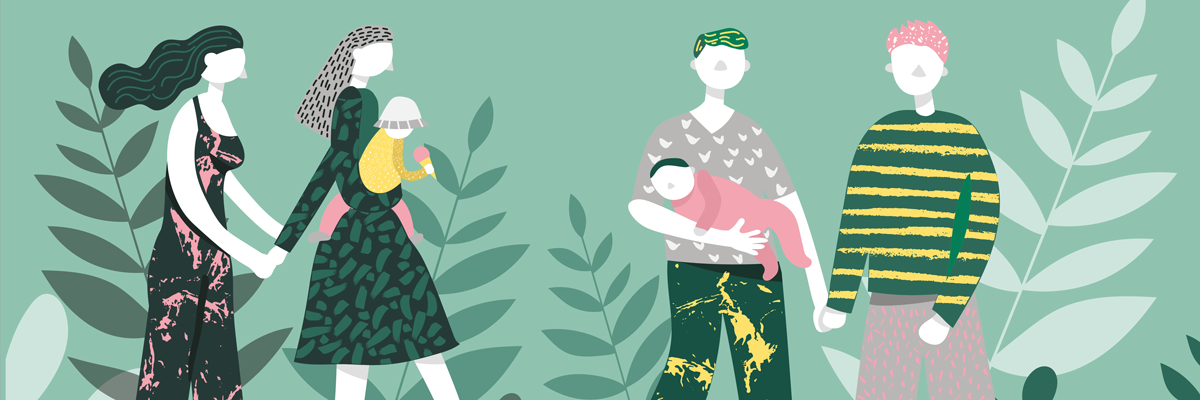

Gender identity is a hot topic. The transgender movement has popularized some of the ethical, medical and social problems faced by those whose bodies do not seem to fit their idea of themselves. In the simplest, and most extreme cases, their bodies – particularly their genitals – do not correspond to what they feel is their true gender. There is heated debate, not all of it very well-informed, about how to help such people, who are often very distressed.
At the centre of this debate lies a question: What is it that determines whether someone thinks of themselves as ‘male’ or female’ or something else – either in between, or neither? It must be in the brain. If we knew what determined gender identity in the brain would this help?
Recently, a bewildered mother wrote to me that she was confused and worried. Her daughter told her that she now identifies as genderqueer. The teenager did not want to take masculinizing hormones or undergo body-altering surgery. What she demanded was genderless pronouns and references. Could I help her understand what was happening with her ex-daughter?
Historically, without giving it a second thought, we assumed that everyone is simply biologically male or female — though we have become increasingly aware that not all individuals feel that they are the gender that matches their birth sex. Within that binary mindset, we’ve also anticipated that with biological sex comes a matching gender identity, thoughts, feelings, expressions, and behaviours — though, unlike sex, to varying degrees. That is, we know that some boys feel and act more like a man than other boys; some girls feel and act more like a woman than other girls. Thinking outside those sex/gender boxes is quite daunting for some, especially in generations older than Millennials. According to the writer Urquhart, what they can’t fathom is that some individuals “feel constrained by a culture that insists that they be either male or female, with all the expectations, assumptions, and stereotypes that come along with choosing one of those identities.” We have long known of the risks that children and adolescents face when they are deemed gender nonconforming by their family and peers. It’s daunting for a youth to be teased for being “gender inappropriate.” Indeed, it’s likely that the primary cause of being teased for non-straight youth is not their sexuality, but their gender expression. Hence, the mother had cause to be concerned for her genderqueer child.

Defining Genderqueer (GQ)
A GQ or nonbinary person is someone who feels that their felt gender doesn’t fit with socially constructed norms for their biological sex. This may be in terms of their thoughts, feelings, behaviours, and, most importantly, their gender identity. Although GQs vary immensely in their gender experiences and preferences, they share, according to Urquhart, “a deep, persistent unease with being associated only with the binary gender assigned to them from infancy.”
According to Richards and colleagues, GQs “have a gender which is neither male nor female and may identify as both male and female at one time, as different genders at different times, as no gender at all, or dispute the very idea of only two genders.” Fortunately for these individuals, “gender identities outside of the binary of female and male are increasingly being recognized in legal, medical and psychological systems and diagnostic classifications in line with the emerging presence and advocacy of these groups of people.” They remain, however, marginalized, at risk for victimization and discrimination.
GQ Umbrella Identities
Brace yourself, because the variety inherent among GQs has resulted in numerous additional labels within the framework of genderqueer.
Here are a few of the common ones according to Giddins:
- Genderfluid: Identify as male, female, or nonbinary at different times or circumstances
article continues after advertisement - Third-gender: "Hirja" in India or "Two-spirit" in Native American cultures
- Amalgagender: Intersex people born with a mixed male/female anatomy
- Demigender: A weak or partial connection to a certain gender (demigirl or demiboy)
- Bigender: Having two gender identities either simultaneously or switching between the two
- Pangender: Identifying with a vast range of different genders
- Agender: Lacking gender, genderless, or not caring about gender identity
Urquhart added several others: trigender, neutrois, trans*, transmasculine, transfeminine, bear, butch, femme, boi, genderfree, and androgyne. Many of these are overlapping and ever-changing, which might cause, Urquhart warned, “a barrier to increased understanding and acceptance of genderqueer individuals by those on the outside” of the GQ subculture. Although we might not understand GQs, listening to their experiences of gender and supporting their decision to identify as genderqueer are no-brainers. Most GQs are forgiving if we slip by using an inappropriate pronoun, especially if we offer an apology. I agree with Urquhart, accepting GQs for who they are doesn’t mean we have to give up our own binary sex/gender world; it just means that we shouldn’t impose it on everyone. We might learn something about that world to hear from those for whom standard sexual and gender categories don’t work.

Transgender
Ruth transitioned at 81, Ramses in his late 40s, and Bethan, at 57, is about to have surgery. Meet the trans baby boomers
Early in October, Ruth Rose went on holiday to Corfu with a group of female friends she had known for years. They swam in the sea every day, making the most of the late summer sunshine. On the last morning before flying home to England, the women took one last swim and skinny-dipped so as not to have to pack their costumes away wet.
Such adventures would once have been unthinkable for Rose. But the surgery she underwent at the age of 81 has opened doors she would never have thought possible. “In some ways it’s like having new hips after being told you would be condemned to arthritis for the rest of your life,” she says. “You do it, and life begins again. And that’s what happened to me. Age has nothing to do with it.”
When we read about people transitioning gender, the focus is often on teenagers; in an emotive debate about access to school changing rooms and Guides camping trips, older trans people are rendered almost invisible. Yet there are more than five times as many adult as child gender identity patients in the UK. Some are now having gender reassignment surgery not just in late middle age, but well into retirement.
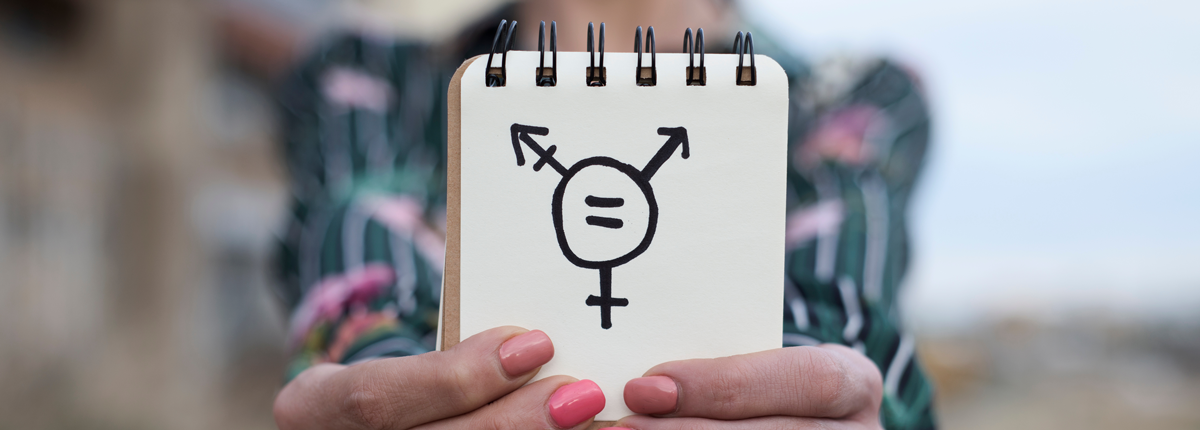
We asked young people around the world to tell us how they define their gender. Here’s what they told us. Some days Daniela Esquivel Asturias, 21, wakes up feeling feminine and puts on a dress or lipstick. But on others Asturias feels much more masculine and the thought of wearing a skirt induces an overwhelming sense of dysphoria.
“I would be equally comfortable with a male or female body. My male personality is more outgoing than my female one. It’s like having both male and female energies and some days a mix of both,” Asturias says. “Because the words to describe us are new people think being non-binary is a fad. But people have always felt non-binary.” The student from Costa Rica is gender fluid, and doesn’t identify with one gender, instead fluctuating between feeling more male or female. .
It’s hard to explain, Asturias says, before referring to the way society tends to define gender, on a spectrum. “At one end is being male and the other female, and you kind of move between the two, and usually remain in the middle.” This is just one of the individual stories sent to the Guardian as part of a survey inviting millennials to define their gender.
We received 914 replies from 65 countries around the world, the majority of submissions came from the UK (302), followed by the US (209) and Canada (78). The median age of participants was 22. Replies ranged from people who felt comfortable with their birth gender, to people who felt agender, trans, and multigender.
Young and transgender
There were advances in 2015 for trans visibility and rights, but many respondents talked about the challenges young trans people still face.
Parker Dell, 24, a trans male from the UK argues that the focus on trans issues actually has its downsides. “Caitlyn Jenner is just another reality TV star, but she’s got people talking, and often not in a positive way. Gender identity clinic waiting times have absolutely shot up in the last year, because suddenly people are realising that they’re transgender. Not only is supply utterly failing to meet demand, but young trans people are being accused of copying celebrities.” Dell adds that while the growth in role models is good, the idea that a young person is choosing to be trans as part of a trend (dubbed “transtrender”) is stupid and hurtful. “It’s something too many young people have to deal with.”
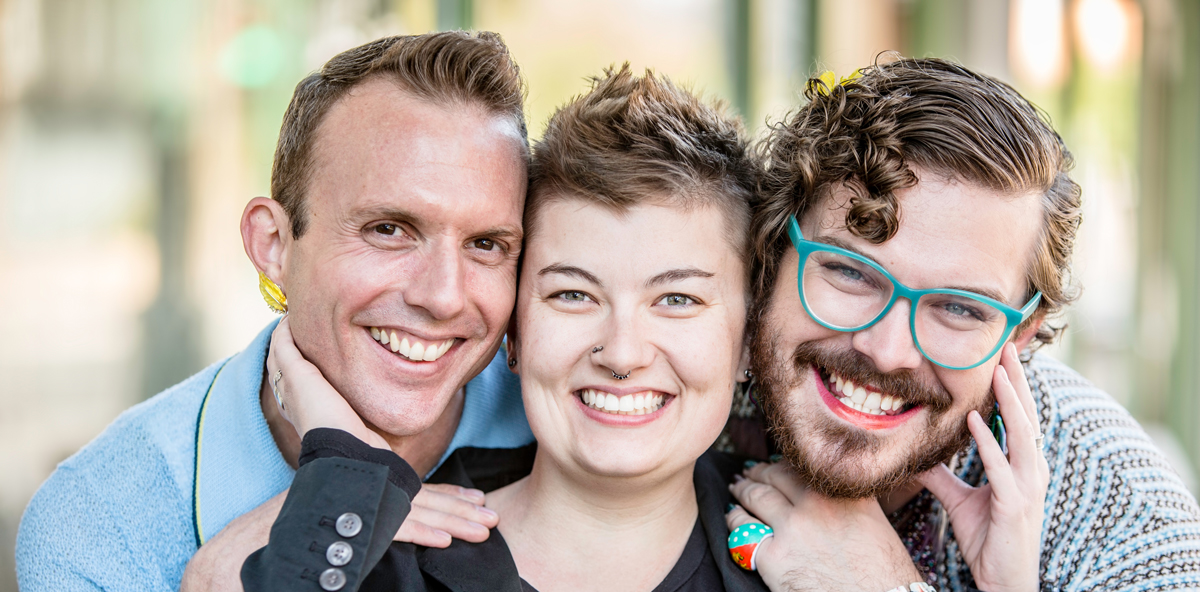

The NHS is "over-diagnosing" children having medical treatment for gender dysphoria, with psychologists unable to properly assess patients over fears they will be branded "transphobic", former staff have warned. Thirty-five psychologists have resigned from the children's gender-identity service in London in the last three years, Sky News research suggests.
Six of those have now raised concerns about hormone treatment being given to children with gender dysphoria, a condition where a person experiences distress due to a mismatch between their biological sex and their gender identity. A psychologist, who wished to remain anonymous, said: "Our fears are that young people are being over-diagnosed and then over-medicalised. "We are extremely concerned about the consequences for young people... For those of us who previously worked in the service, we fear that we have had front row seats to a medical scandal." The Gender Identity Development Service (GIDS) at the Tavistock and Portman NHS Foundation Trust is where children with gender dysphoria are treated on the NHS. GIDS had 2,590 children referred to them last year, compared with just 77 patients a decade ago.
According to the Tavistock and Portman NHS Trust there are now around 3,000 children on the waiting list, with waiting times for an appointment at about two years. Another psychologist, who wished to remain anonymous, described a service where staff are under immense pressure, with little time to thoroughly evaluate children. "At the moment there's only one pathway through the service, which is a medical pathway, not a psychological one," the psychologist said. "A junior clinician working full-time is expected to carry a caseload of 120 to 130 young people. "Compared to child and adolescent mental health services where the equivalent would be 40 cases. So, it's three times larger than the average service." They described a service where psychologists are constrained in the work, they can do with a patient for fear of being called "transphobic".

The psychologist said: "The alarm started ringing for me... I didn't feel able to voice my concerns, or when I did, I was often shut down by other affirmative clinicians. "Looking back there are young people who I now wouldn't necessarily put on medication." In the last decade, the proportion of patients being referred to the NHS children's gender service who were assigned female at birth has grown, from 44% to 74%. Psychologists say there has been an increase in "female-born" teenagers, many of whom have underlying issues, identifying as trans. The underlying issues range from experience of homophobia to a history of abuse.
Some of these teenagers do not find medical treatment helps their gender dysphoria. For some, it's a mistake and they later "detransition" to their biological gender. "Mainly the thing that was fuelling me was that I didn't fit in and then I was slowly drip fed this idea that you could change sex," Thomasin said. "At 15 I wanted to have top surgery and be a man... it did feel scary at times because you're going down this route of a medicalised pathway and I did have those little niggles in the back of my mind." Thomasin now identifies as female again. She says her desire to be trans was because she was struggling with her sexuality as a lesbian.

The guide is for transgender employees, employers/managers, and human resources staff. The need for this guide comes from a recognition that transgender employees are valuable members of staff, yet the workplace can be a daunting environment for some. A hugely beneficial factor for transgender employees is a working environment that feels safe and supportive. A point that was continuously raised by transgender employees and employers throughout this project was the importance of a good working relationship between the employee and their employer/manager and HR staff.
Download and read the full support guide here:
Transgender Workplace Support Guide
A guide to support transgender employees, their employers and human resources staff in the workplace to develop good working relationships and an inclusive working environment.

In terms of equality in the workplace and within wider society, few minority groups face more challenges of inadvertent or deliberate discrimination than the transgender community.
In this feature we will provide an overview of the protections provided to transgender employees and the challenges experienced by the trans community in the workplace through interview responses from transgender employees about their own experiences.
Transgender and transsexual people are protected by two key pieces of legislation. The Equality Act 2010 outlaw’s discrimination in employment on the grounds of gender reassignment, and The Gender Recognition Act 2004 allows transsexuals to obtain a Gender Recognition Certificate to legally change their gender.
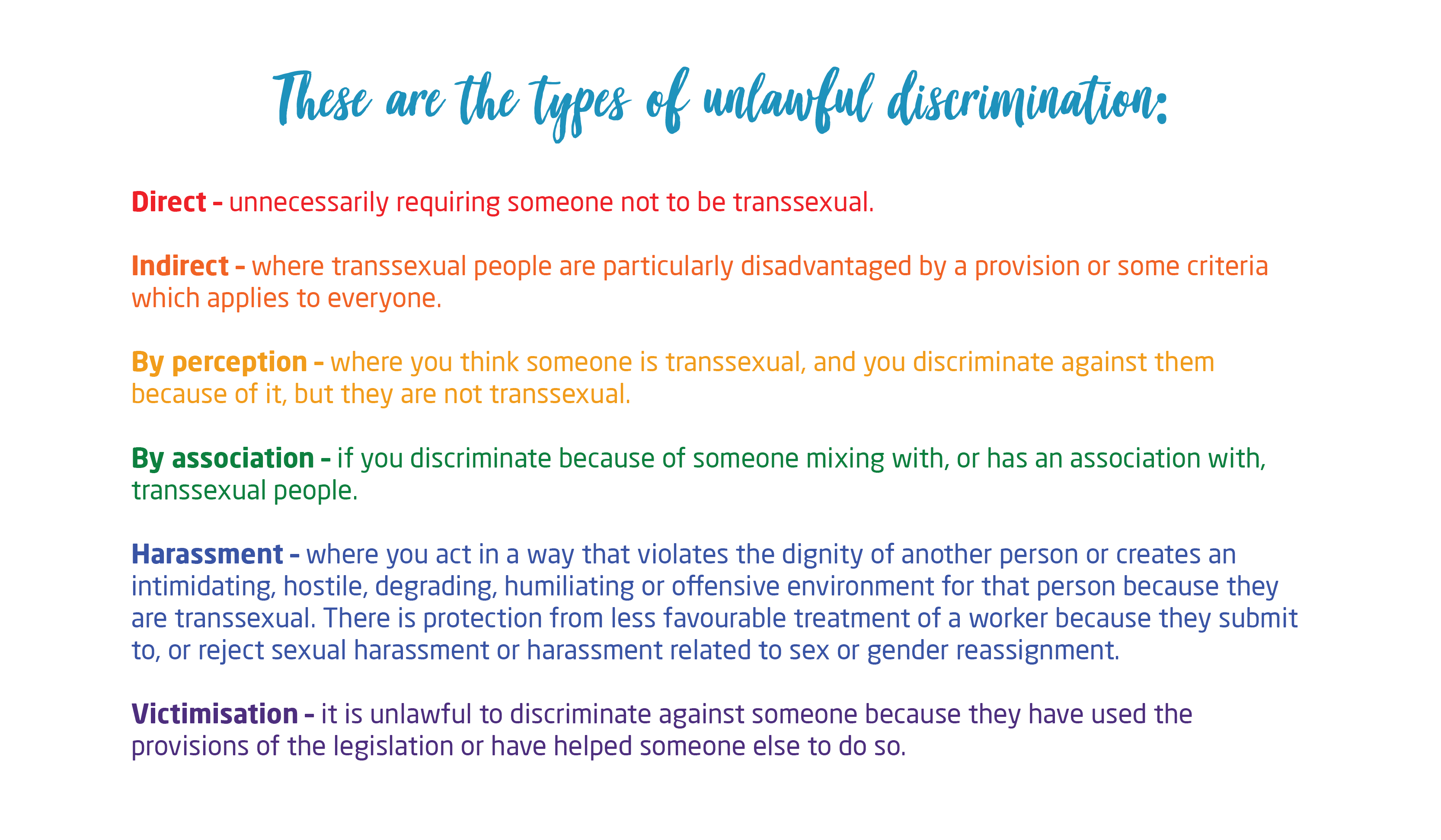

A person’s gender is usually assigned at birth based on the sex of the individual. However, a person may feel conflict between the gender they have been assigned and how they feel. As a result, a person may take steps to live as the gender which they identify with. This can happen at any point in their lives.
Transitioning is the process of moving from one gender to another and involves social, psychological, and emotional changes. The time this takes is different for every individual.
A supportive employer can greatly assist an employee by being understanding and accommodating in helping the employee as they take these changes, step by step. In this regard it is useful to look at some of these steps more closely:
• Change of name
• Supporting transgender employees
• Changing jobs
• Absence from work
• Dress codes
• Toilets and changing rooms
• Measuring and monitoring

References:
1. https://www.stonewall.org.uk/help-advice/coming-out/coming-out-adult-1
2. https://www.theguardian.com/lifeandstyle/2016/may/14/10-tips-how-come-out-lgbt-family-friends-gay-lesbian
3. https://www.constructionnews.co.uk/agenda/lgbt-71-cant-be-open-about-their-sexuality-on-site-11-10-2016/#A_step_backwards
4. https://www.glassdoor.co.uk/employers/blog/10-ways-support-lgbt-employees
5. https://eandt.theiet.org/content/articles/2014/07/lgbt-survey-et-hears-from-the-engineering-industry
6. https://www.theguardian.com/sustainable-business/lgbt-employees-discrimination-in-the-workplace-talkpoint
7. https://www.myhrtoolkit.com/blog/lgbt-inclusion-in-the-workplace
8. https://www.stonewall.org.uk/media/lgbt-facts-and-figures
9. https://www.stonewall.org.uk/media/lgbt-facts-and-figures
10. https://www.psychologytoday.com/us/blog/hormones-and-the-brain/201608/gender-identity-is-in-the-brain-what-does-tell-us
11. https://www.psychologytoday.com/us/blog/sex-sexuality-and-romance/201807/guide-genderqueer-non-binary-and-genderfluid-identity
12. https://www.theguardian.com/society/2018/nov/17/age-nothing-do-with-it-transition-later-life-transgender
13. https://www.theguardian.com/commentisfree/2016/mar/23/gender-fluid-generation-young-people-male-female-trans
14. https://news.sky.com/story/nhs-over-diagnosing-children-having-transgender-treatment-former-staff-warn-11875624
15. https://www.hr-24.co.uk/articles/transgender-employees/








